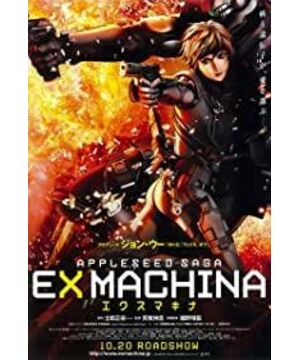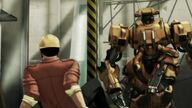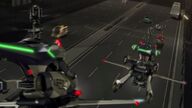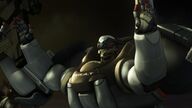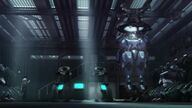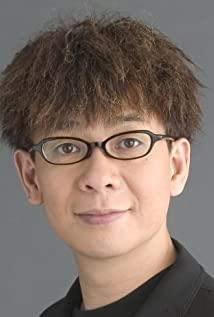Araki's "Apple Core Sequel" is just the opposite, preferring to fully animate real people, and it is quite expressive and eye-catching. This thing itself is very traditional, just like copying a character when painting, it is human instinct. The Apple Core Sequel uses the same 3D technology but looks like a two-dimensional hand-painted. In any case, looking at Angelina Jolie's body that was digitally pieced together always felt as cold as a machine, and watching the reality show turned into a hand-drawn animation was much more comfortable.
As a movie fan rather than an animation fan, watching a theatrical movie like "Apple Nuclear War" may be more enjoyable. Because this is the kind of pure cartoon that has been completely filmed, this concept is refreshing, and it can be completely surprised by jumping out of the unique American cartoon of Pixar animation. The reason why Japan's two-dimensional animation is still brilliant after so long behind in technology is not because it is more supportive of the public and its own characteristics. If it is completely filmed like the sequel to "Apple Nuclear War", not only the lethality will increase, but also it is bound to extend a 3D road suitable for the development of two-dimensional animation.
The image effects of "Apple Core Sequel" are completely cinematic products. Lens language, perspective switching and fast cuts are just like a commercial action blockbuster. Woo's style intervention also timely enhances the appeal and depth of the film's action scenes. Araki greedily borrowed the typical action scenes created by the epoch-making special effects of action movies in recent years, such as the 360-degree perspective of "The Matrix" and so on. The extremely fast action scenes in the film are the most outstanding, almost achieving the effect of a blindfold.
The ending climax of the theatrical version of "Apple Nuclear War" (including "Japan Lockdown") is a tribute to the classic long-distance chase of "Star Wars". , extreme speed and other action movie elements. This combination of game experience, movie visual effects, and animation feelings not only forms a super stimulation of the adrenal glands, but also makes people feel the fresh and wonderful feeling that has been long lost. I also have to say here that the pictures rendered by the film through 3D technology are really outstanding, and the light and shadow are even more addictive.
Compared with the first film three years ago, the film is technically cross-generational. The previous work was quite shocking in the past, and I didn't want to be buried in the ground after three years. Watching the two films together again can directly confirm the rapid progress of CGI. This substantial improvement in sensory audiovisual technology has to remind the prospect of works with two-dimensional animation look and feel. It may be unfounded, but fans who rely on pure audio-visual enjoyment have quickly given up their praise for the previous work. In other words, Japanese two-dimensional animation headed by master Gong Qijun is bound to find a way out as soon as possible that can integrate and penetrate the advantages of technology. Just like this film, 3D is used to restore 2D, and 2D is used to correct 3D, killing two birds with one stone.
In the same style, "Japan Locks the Country" (directed by Zeng Liwenyan) from the same school is almost the same as this film, and the inspiration comes from Shilang Zhengzong's 1985 classic animation "Apple Nuclear War". What's more the same is the monotony of the film's plot, which is really lackluster to mention. Even if the disaster of Japan's lock-down is imagined again, it can't bring any surprises about the plot. Nobuzhi Araki really needs to think about it, will such a plot affect the life of the film? Moreover, the overly gorgeous colors not only add beauty to the film, but also have a vulgar feeling.
Perhaps, the complete filmization of animation is not the ultimate choice for animation culture, but it is definitely a good way out. In recent years, the strongest Japanese animations, such as "The Bad Boy", and even several consecutive "Drabocats", are almost always leading the way in the theatrical version released in cinemas. In these theatrical versions, the texture and style of animation also have the opportunity to completely realize a lot of blank space in the mind of animation with the leap of film technology, such as the powerful action scenes in this film. Therefore, it is necessary to integrate and renovate with advanced things to maintain the strong vitality of two-dimensional animation.
View more about Appleseed: Ex Machina reviews


